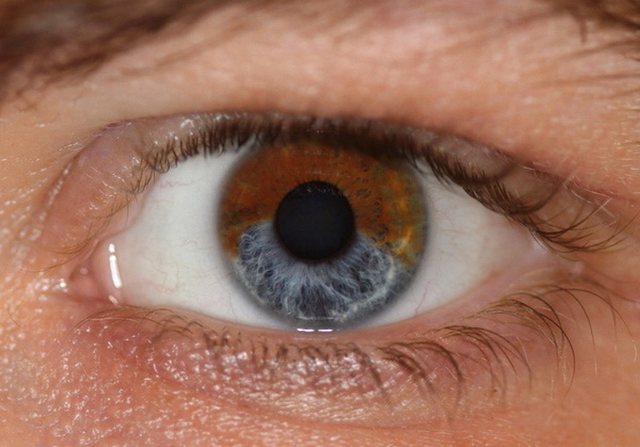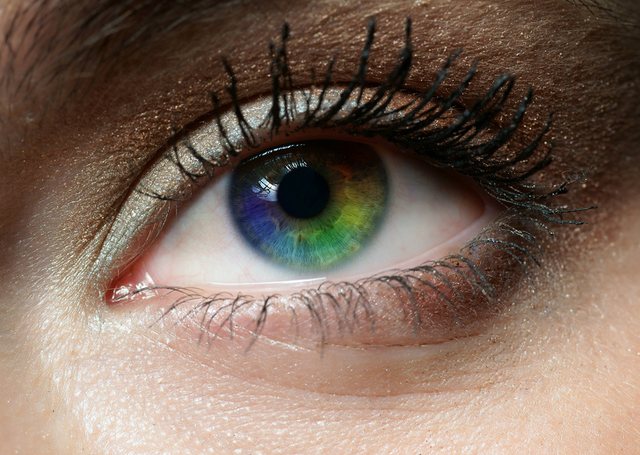
Regardless of whether you have brown or blue eyes, youâ??ve probably wondered what you would look like with green eyes, for example. But very few of us know that there are a number of factors, including food and emotions that can change the color of our iris. We will show you the most interesting facts and examples of how eye color can be changed using famous examples.
1. How can humor affect eye color?

Strong emotions are a certain shock to our body. When we experience pleasure or joy, the frequency of the heartbeat changes, breathing becomes faster and more difficult, but the color of the iris also changes. It can become more intense, sometimes darker and sometimes lighter.
2. Melanin and age.

If a baby is born with blue eyes, you may be surprised later. The secret of blue eyes, which is also called the "sky effect", is in the low content of melanin in the iris, which scatters light and emits an even lighter blue color.
The color of the eyes of many babies at the age of 3-18 months may become darker if the amount of melanocytes in their iris becomes greater. For example, people living in mountainous regions are often born with blue eyes that later turn brown, but this depends largely on the color of their parents' eyes. Sometimes, the final color of the eyes is not determined until the age of 12 years.
But babies born with brown eyes do not change and keep that color for the rest of their lives. Due to its high melanin content, the outer layer of the iris absorbs and reflects the resulting light brown color. By the way, although people with dark eyes suffer from eye diseases less often, they still need to wear sunglasses.
3. Raw food diet and detoxification

In alternative medicine there is a theory that the color of the iris and the health of the internal organs are related. This direction in medicine is called iridology, but since there is not enough evidence base, it is considered pseudoscientific.
But Dr. Robert Morse, a health expert, believes that the outer quadrant of the eye is related to brain health, while the inner circle is related to the digestive system.
He says many fruits and vegetables in the diet can change eye color and he even created a series of videos dedicated to his study.
In addition, Drs. Morse says that each person's pigment is unique and requires an individual analysis. He believes that spinach helps to keep the eyes youthful and bright, honey can add warm hues and seafood can make the color more intense. Other foods that can affect eye color are olive oil, onions and nuts.
4. Makeup and clothes can change eye color.

People with blue or green eyes can emphasize the color more by using emerald or blue color in clothing. Neutral colors like white, gray and black can help to emphasize the natural color of the eyes.
5. Sunlight and habitat.

Brown eyes are the most common color on Earth, 70% of the planet's population has them, and you can find them on all continents from Australia to North America. Blue-eyed people are more common in northern Europe: Estonia, Denmark, Finland - 85%, Germany - 75% and the UK - 50%. Sometimes, this eye color can be found in people in the Middle East.
Genetic researchers from the University of Copenhagen have discovered that blue irises are the result of a mutation that occurred about 6-10 thousand years ago. Only 2% of the planet's population has green eyes. This coloration was formed due to the moderate content of melanin and the combination of yellow pigment with brown.
Green eyes are more common in Spain, Ireland, Russia, Brazil, Iceland and Pakistan. The rarest eye color is yellow, which is the result of eyes that have a pigment called lipochrome.
6. Opening the eye color with laser.

Operations like this were once very dangerous and could even lead to blindness, which is exactly what happened to this Argentine. But in 2011, Dr. Gregg Homer invented a laser surgery that could change eye color. With the help of a laser, melanin cells are destroyed, causing the iris to turn lighter in color. This means that brown-eyed people can become blue-eyed or gray-eyed.
The procedure only takes 20 seconds, and the final result becomes apparent in 2-4 weeks.
7. Chameleon-colored people with eyes.

Some people have eyes that can change color. Although this phenomenon has not yet been studied in depth, all scientists still acknowledge that this is not a disease, but a unique feature that only a few people have. Doctors have not found any problems with looking at these people and this "gift" cannot be inherited.
According to the study, a constant change in eye color is associated with processes in the nervous system and endocrine and the amount of melanin. Chameleon eyes react to stress, romantic feelings and fatigue, their change can also be related to the environment and climate change. Psychologists say these people are sometimes unpredictable.





